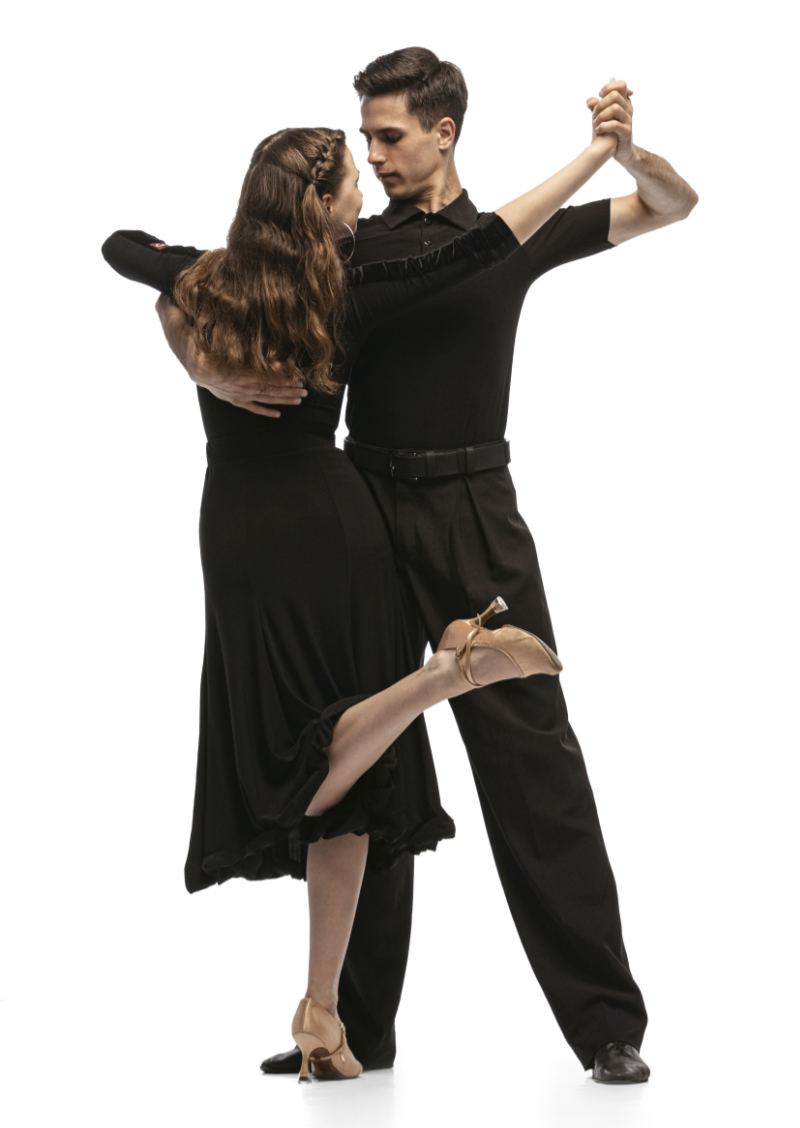Dance d’ Elegance
750 E. Washington St. #F1, Medina, OH 44256
The Connection Between Tango Dancing and Cancer Recovery Improvement*
Tango dancing, particularly the Argentine Tango, has emerged as a promising supportive therapy for cancer survivors, especially those recovering from chemotherapy. Multiple studies and clinical trials have highlighted several key benefits:
Improvements in Neuropathy and Balance
- Chemotherapy-induced neuropathy (CIN) is a common side effect for cancer survivors, leading to pain, numbness, tingling, and balance issues, significantly affecting quality of life.
- Adapted Argentine tango dance therapy has been shown to help survivors regain natural balance and sensation after experiencing neuropathy.
- Just five weeks of Argentine tango led to a significant decrease (56%) in medial and lateral sway, indicating improved balance8.
- The rhythmic and partner-based nature of tango provides implicit balance training, helping survivors reconnect with their bodies in a supportive and enjoyable way.
Reduction in Cancer-Associated Fatigue
- Cancer-related fatigue is a persistent problem, particularly for breast cancer survivors.
- A six-week supervised Argentine tango program significantly improved fatigue and quality of life, with benefits sustained for at least six months after the intervention.
- Tango participants experienced improvements in physical functioning and reduced fatigue, even when compared to control groups that did not participate in dance therapy.
Cognitive and Motor Function Benefits
- Preliminary data indicate that tango dancing can enhance cognitive function, motor function, and dual-task performance, likely due to the cognitive engagement required during dance.
- The music and rhythm of tango (typically 120 beats per minute) may help “entrain” neural pathways, aiding neurological recovery and potentially helping to remap nerves damaged by chemotherapy.
Enhanced Quality of Life and Emotional Well-being
- Tango therapy has been linked to better overall quality of life, reduced depression, and improved pain perception.
- The social and musical aspects of tango provide additional psychological and emotional benefits, fostering social connection and enjoyment.
Sustained and Accessible Physical Activity
- Many survivors with severe fatigue find traditional exercise challenging, but tango offers a motivating and accessible alternative that can help break the cycle of inactivity and fatigue.
- Group tango sessions are generally well-received, and continued participation may lead to more lasting effects on quality of life and fatigue reduction.
This work is about helping survivors reclaim their lives and thrive, rather than just survive — Lise Worthen-Chaudhari, — The Connection Between Tango Dancing and Cancer Recovery Improvement

*References:
This is a summary the information from the following sources. For more on Drumming, Dance and Parkinson’s check out these articles.
